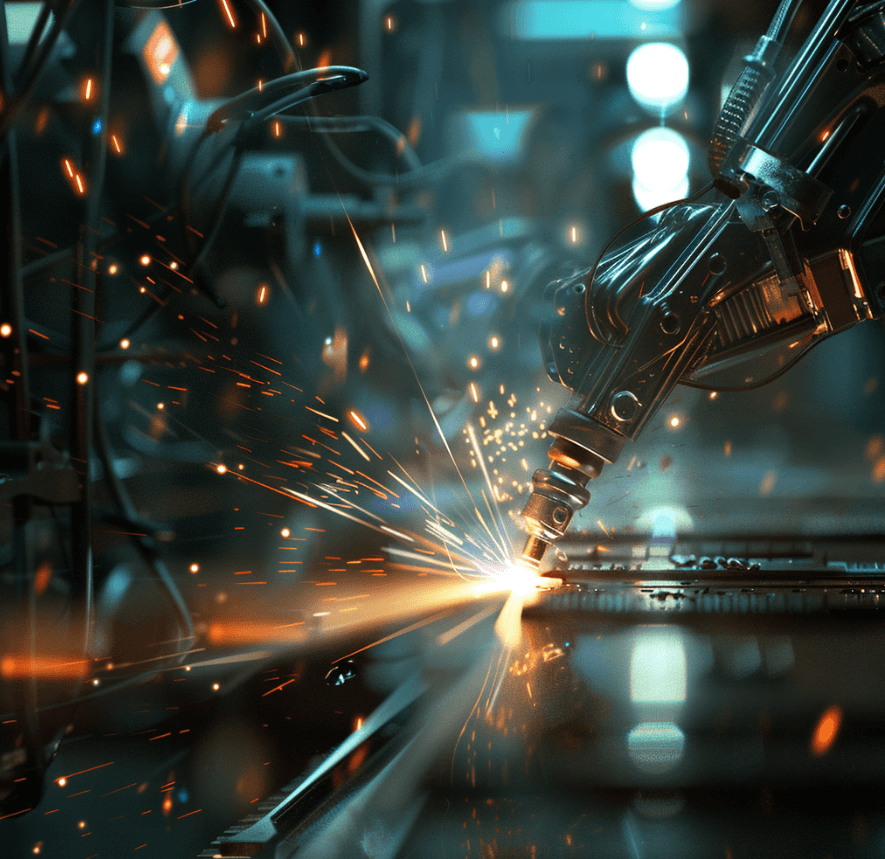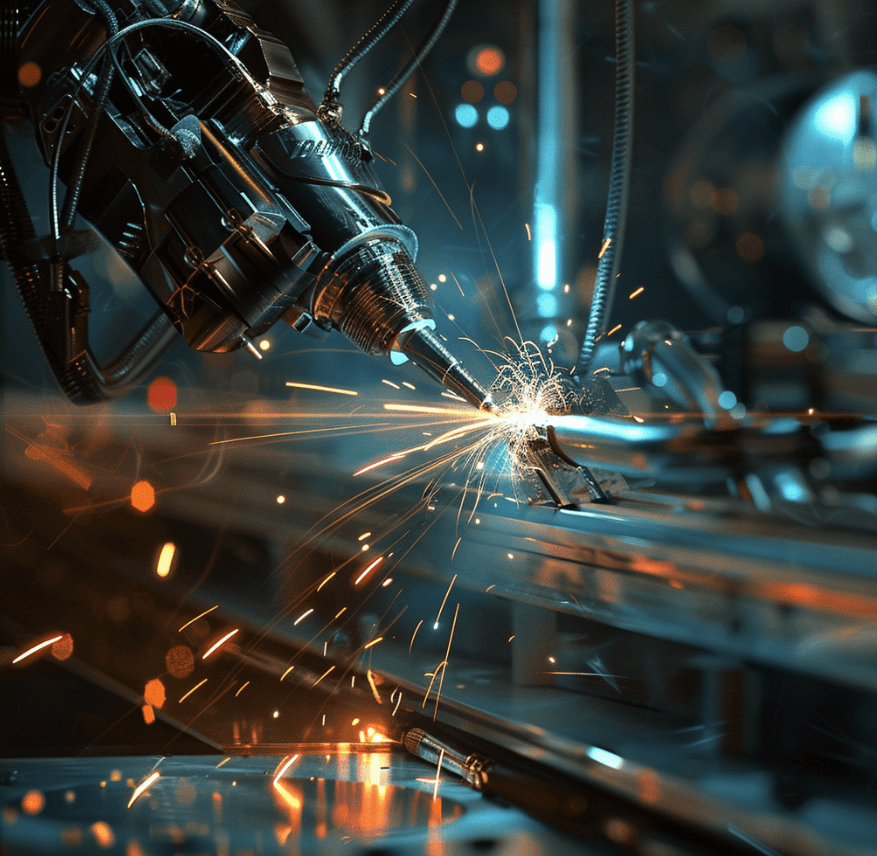

Robotic MIG welding uses robot arms to automatically weld materials together using the metal inert gas (MIG) welding process.
A MIG welding robot is programmed to join metal parts precisely and quickly with a continuous wire feed welding gun.
Robotic MIG welding systems are made up of a few essential components:
The robot arm manipulates the welding torch along the weld seam, the power source provides current to melt the welding wire, and finally, the wire feeder pushes wire through the welding torch, and the welding torch joins the two metal parts together.
MIG welding robots are automated welding systems that handle the welding torch and manipulate it along the weld path.
Let’s break down the components of a robotic MIG welding system:
To weld with a robot, you first need to program the robot by teaching it the weld path or uploading a CAD model.
The robot then performs the programmed welds with an inhumanly high degree of repeatability and precision.
There are enormous benefits to robotic MIG welding. To make it short, automating the welding process can help improve quality, increase productivity, and help you massively reduce costs in your fab shop.
Here’s how robotic MIG welding helps:
For any fab shop, robotic MIG welding simply offers huge opportunities to streamline operations, reduce expenses, improve quality, and boost output.

MIG welding robots aren’t cheap, but the long-term gains in productivity and quality can make the investment worthwhile for many manufacturers.
If you’re shopping around for an MIG welding system, you’ll need to keep both the upfront costs and the ongoing operating expenses in mind.
Think long and hard about these first:
The actual purchase cost. The robot arm itself will likely be your biggest upfront cost. Prices for a basic Six-Axis arm suitable for MIG welding typically start around $30,000 to $100,000, depending on the payload capacity and reach you need. You’ll also need a welding power source, wire feeder, torch, and any necessary mounting equipment or enclosures. All told, a small robotic MIG welding workcell with a single robot arm can cost you $75,000 to $200,000 or more.
Don’t forget the ongoing costs to run your new robotic welding system. You’ll need welding wire, gas, and electricity to power the robot and welders. Maintenance costs include routine service, replacement parts, and periodic software upgrades to improve the robot’s performance or add new features. And of course, you’ll need to train your team to safely program, operate, and maintain the equipment.
Plan on budgeting at least 10-15% of the purchase price annually for operating costs.
All in all, robotic MIG welding brings a host of benefits to your fab shop. The initial investment may look like a hill steep to climb, but it’s well worth it!
Once you’ve decided that you want to take the automation plunge, then you need to put your plan into action.
The essential steps to implementing robotic MIG welding in your shop include:
That was a quick but thorough rundown on everything you need to know to get up and running with a robotic MIG welding system.
We covered the basics of how these robots work, the major components involved in their operation, and the cost considerations.
While it may seem daunting and maybe above your pay grade at first, we can guarantee that taking the plunge into welding automation can pay major dividends for your fab shop's productivity and quality.
But don’t get overeager: Start slowly, follow safety protocols, and don't be afraid to lean on your equipment distributor or integrator for any additional support.
Elevate your MIG welding with state-of-the-art automation! Standard Bots' RO1 leads the charge in Six-Axis articulated robot arm technology, making it an exceptional option for both growing fab shops and large corporations.
Our dedicated team is here to help you seamlessly blend RO1's avant-garde features into your operations. Discover its capabilities with our 30-day no-risk trial!